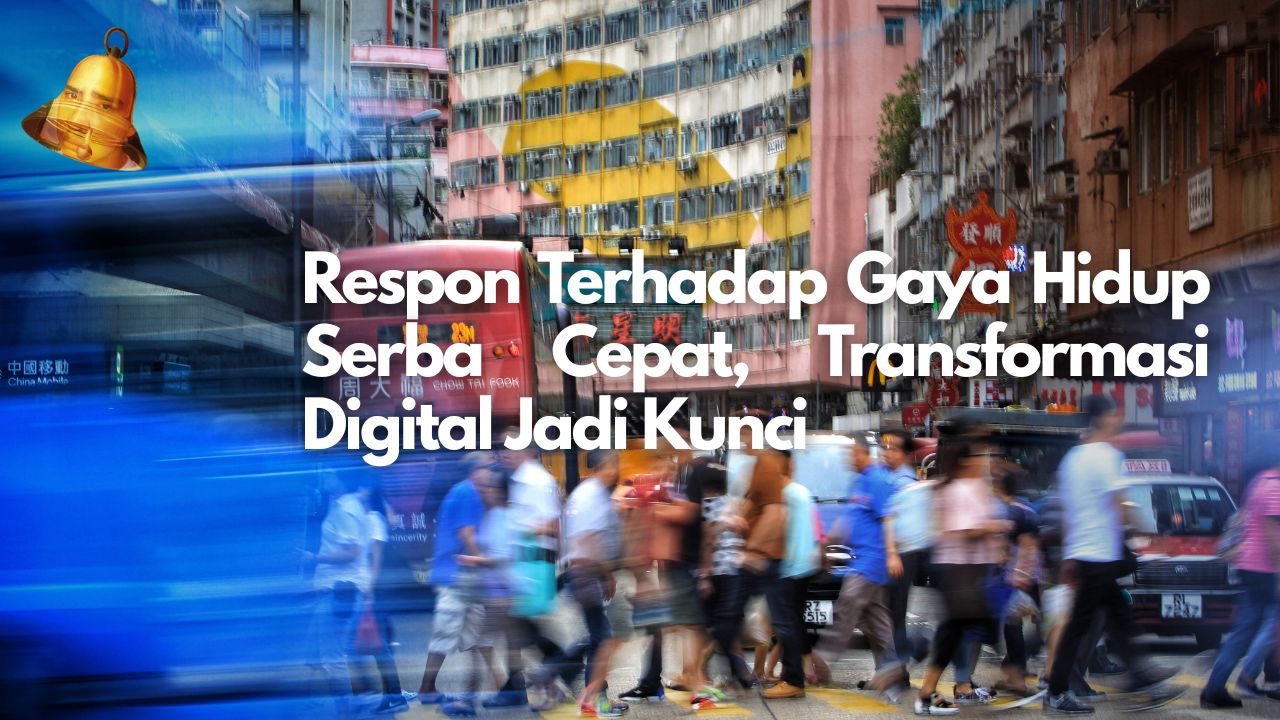The fast-paced lifestyle of the digital age is characterized by the need to multitask and expect instant results. The internet, social media, and global connectivity push us to be constantly active and on the move. Instant messaging apps, online shopping platforms, and on-demand services have become part of our daily routines, creating demands for high efficiency in a short amount of time.
As a result, many people feel burdened by multitasking and maximizing every minute. Opportunities for reflection or complete focus on a single activity are increasingly limited. This phenomenon impacts not only individuals but also companies' business models, which must meet the ever-changing expectations of fast-paced customers.
The Role of Digital Transformation
Digital transformation is the process of applying digital technology to all aspects of operations, from management and production to customer interactions. The goal isn't simply to replace manual systems with automated ones, but rather to overhaul mindsets and work cultures to become more agile and responsive to market changes.
With the right strategy, companies can reduce repetitive work, accelerate decision-making, and improve collaboration between teams. Meanwhile, customers experience a smoother experience because service access becomes faster and more personalized.
Operational Digitalization for Efficiency

One of the key steps in digital transformation is automating work processes. For example, using robotic process automation (RPA) to handle routine administrative tasks and AI analytics to predict customer demand. This automation reduces human error and accelerates coordination between separate departments.
With real-time data, managers can immediately identify sales trends or production bottlenecks. Corrective action can be taken without delay, ensuring smoother and more productive business processes.
Adaptive Customer Experience

Amidst intense market competition, customer experience is a key differentiator. Companies are now integrating online and offline channels to allow customers to switch freely according to their preferences. For example, Kawan Lama Group implemented RISE with SAP to connect its more than 300 outlets in real time.
As a result, store staff can check stock availability at other branches and process deliveries quickly. Customers avoid long queues or the frustration of out-of-stock items, which increases satisfaction and maintains loyalty.
Digital Transformation Implementation Strategy
Changing work culture and operational systems requires careful planning. Here are some key strategies:
Targeted Technology Investment

Not all technologies are suitable for every business. Companies need to conduct an assessment to identify which processes need the most improvement. Then, gradually allocate budget to appropriate solutions, such as cloud-based ERP, CRM systems, or data analytics platforms.
Focus on projects with the greatest impact first. Small successes in one area can spark broader support across the organization.
Digital Work Culture and Training

Digital transformation isn't just about software, it's also about people. Employees need to be prepared through targeted training to be able to use new technologies. Furthermore, senior management must lead by example by implementing digital collaboration tools in meetings and reporting.
Building a work culture that values innovation, experimentation, and failure as learning will accelerate technology adoption at all levels.
Long-Term Benefits for Companies and Individuals
Flexibility and Scalability

With digital systems, companies can scale up or down operations more easily based on market conditions. Cloud infrastructure, for example, allows for the addition of server capacity in minutes.
For employees, this flexibility means being able to work from any location without sacrificing productivity.
Competitive Advantage

Companies that respond more quickly to change will always have an edge. Data analytics that provide in-depth insights into customer behavior opens up opportunities for new product or service innovation.
Consumers also benefit from services that are more personal and relevant to their needs.
Conclusion
Our fast-paced lifestyles demand constant adaptation. In a business context, digital transformation is no longer an option but a necessity to meet customer expectations and maintain competitiveness. This process involves technology investment, cultural change, and employee training.
Companies that successfully integrate digitalization into their operations and customer experience will enjoy increased efficiency, flexibility, and loyalty. Meanwhile, individuals will become more productive and flexible in their daily lives. Therefore, digital transformation is not just about technology, but the key to responding quickly and appropriately in this ever-changing era.


